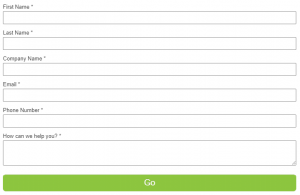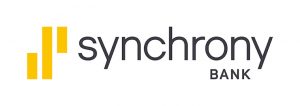A couple of weeks ago, Business Insider published an amazing article by Alex Morrell on check cashing that I think is well worth everyone’s time to read: An Ivy League professor who spent four months working in a South Bronx check-cashing store says we’re getting it all wrong.
The article focuses on the research of University of Pennsylvania professor Lisa Servon, who spent several months working as a cashier at a check-cashing service in order to actually understand why people would ever choose such a service instead of the normal banking industry. She actually found a lot of interesting reasons why, ones that she’s outlined in her book The Unbanking of America.
I know several people who use check-cashing services, and their primary reason for doing so is that local banks will no longer do business with them. Those individuals built up a large history of overdrafts and other such misuses of the bank’s services until they had piled up a mountain of unpaid overdraft fees and other expenses, at which point the bank simply cut ties with them. They now use check-cashing services, for better or worse, for their financial needs.
First of all, let’s look at what the check-cashing industry is and the services it provides, because it’s something that many people who are “doing things right” in their financial life may be unfamiliar with.
A check-cashing service offers a number of financial services, many of which you would expect to find at a typical bank. Check cashing is obviously one, but others include payday loans, other short term loans, bill payments, money orders, notary services, currency exchange, public transportation passes, mail services, prepaid debit and credit cards, and so on. The exact services vary from business to business and even location to location.
At a check-cashing service, the biggest thing you’ll notice is that the services are listed on a menu, not too different than what you’ll find at a fast food service, and each service is denoted with an exact price. Those prices are often in dollar amounts, but sometimes, as in the case of the check cashing, it’s listed as a percentage of the face value of the check.
What a check-cashing service typically doesn’t offer is a checking or savings account. They don’t and won’t hold your money for you. They won’t enable you to write checks on behalf of an account that may or may not have money in it.
Here’s how I look at the two in comparison. A check-cashing service offers all of the services of a bank that don’t require extending trust to the customer; instead, all of the transactions are done over the counter for a clear fee. What sets a bank apart is that some bank services are oriented around extending some trust to the customer, but the fees come in whenever a customer does things that are outside of a narrow list of things, and the fees are often unclear.
You can see this when you compare the experience of taking a check into each of those businesses.
At a check-cashing service, you take your check in there and you see that they charge you 3% to cash that check. It’s a $1,000 check, so you pay $30 to cash it – they hand you $970. The business will attempt to verify the check before they cash it, of course, and that can take a few minutes. Once they do cash it, though, the $970 is yours. You walk out of there with no further business arrangement between you and the business.
At a bank, you take your check in there and there are no fees listed clearly anywhere. You take that $1,000 check up to the counter to cash it. They’ll cash it for you – if you have an account there – and if you do have an account, they’ll encourage you to deposit that check and may even require it to be deposited.

Transparency Check-cashing services are very up front about their fees – as I mentioned earlier, they’re often displayed on a giant board inside the shop so you can see what everything costs right off the bat, just like at a fast food restaurant.
With a bank, you often don’t see the fees. They’re included in small text in a brochure or in the fine print of a lengthy handout. That means that such fees often surprise customers, and those surprises aren’t usually happy ones. Seeing your account dinged with a $3 ATM fee and a $9.99 maintenance fee for not having a particular balance or just to have the account open can be frustrating, especially when you’re not expecting it.
Service Check-cashing services are very much service-oriented businesses. They make their money through good customer service and interaction with customers. Most banks really don’t do that; they have tellers, but the tellers are usually driven by throughput of customers, meaning that they don’t spend a lot of time or a lot of effort establishing positive rapport with customers.
For many people, strong customer service is a real value that they’re willing to pay real money for. A person at the counter who will explain something to you instead of rushing you through it means a lot to many people. A person at the counter who positively engages with you, learns your name and your story, and remembers you when you return means a lot to many people.
If you look at things from this perspective, it becomes clear why some people use check-cashing services instead of the normal banking system. Many of those customers have been burnt by hidden fees and waiting for checks to deposit and are alienated by cold customer service, and that adds up to a deep mistrust of banks. That mistrust is exactly what’s met by check-cashing services.




